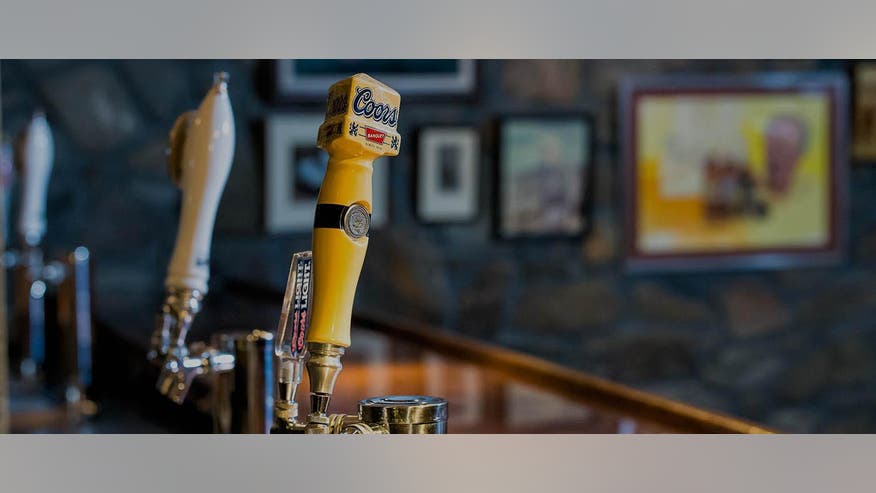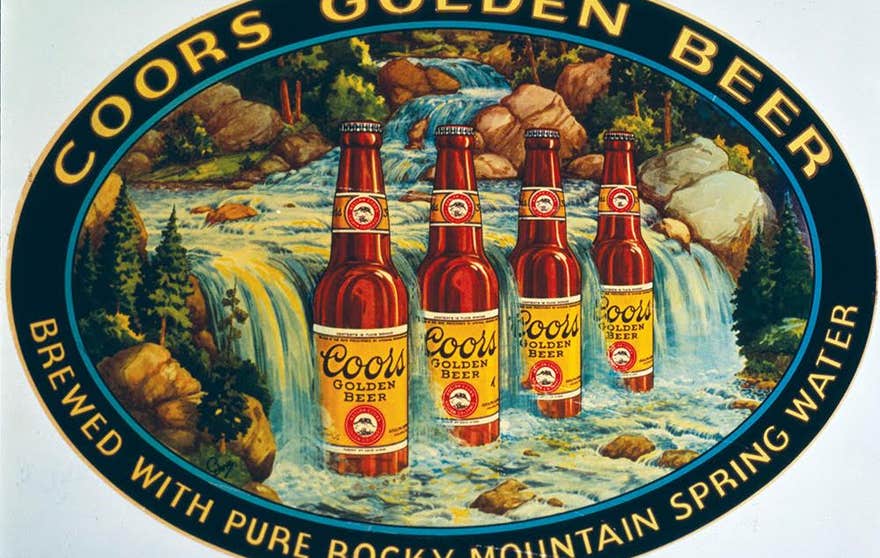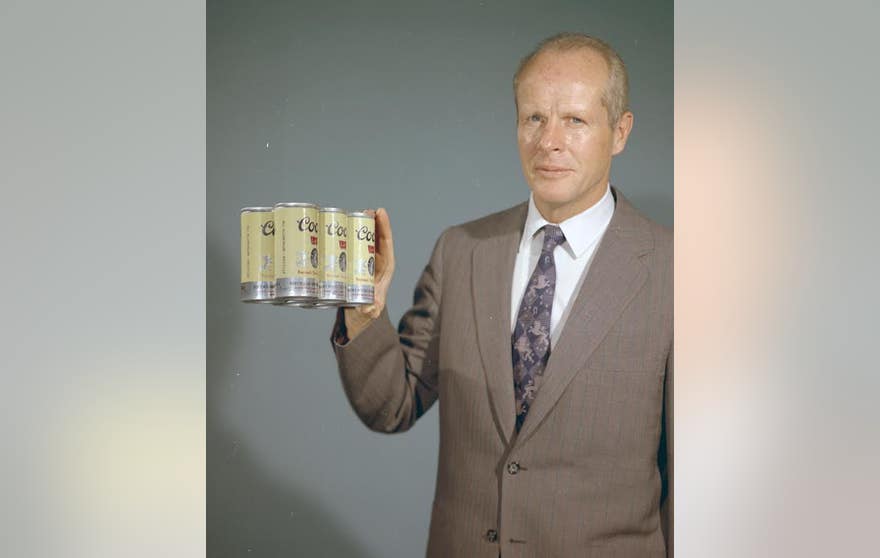
Coors isn’t just beer. It’s an iconic American brand. (MillerCoors)
Launched by Adolph Coors in 1873 in Golden, Colorado, Coors Brewing Company came close to cult status in the 1970s when you couldnt get it east of the Mississippi. Coors Light is now the companys powerhousenow that its available all over the U.S.– but its original Banquet brand is making a comeback.
Here are a few things you might not know about Coors.
Related Image

1) A macro micro?
Unlike most non-light beers from larger producers, Coors old school Banquet brand has been growing in recent years. The Banquet brand–named for Colorado gold miners post-work banquetsis still made only at the companys home base in Golden and has a unique retro appeal for millennials seeking authentic brands. In 2013, Coors reintroduced Banquets old school 1936 stubby bottle.
2) A Thoroly good beer.
The vintage slogan Thoroly Aged Coors Golden Banquet Beer. Brewed with 100% Rocky Mountain Water was brought back with the return of the stubby bottle. The shortened spelling of thoroughly was one of 12 spelling changes adopted by the National Education Association in 1898 (the groups goal was to make English easier to learn and understand). Those spelling reforms were supported by President Teddy Roosevelt– who tried, and failed, to make them official.
3) Feeling the chill.
While the original Banquet brew may be on the rise, its little sister has stolen the show in recent years. Coors Light is now the number two beer in the U.S.trailing only behind its light lager competitor Bud Light. The light version was introduced in 1978marking the first time the brewery made more than one product. Coors Light, promoted as cold lagered, cold filtered and cold packaged, is now brewed in eight breweries around the country, including a few on the East Coast so not all Coors are brewed with Rocky Mountain water.
4) Cult classic.
For decades Coors was only available in 11 states– all west of the Mississippi. By the 1970s, it achieved something approaching cult status, with folks like President Gerald Ford reportedly returning from trips out west with dozens of cases of Coors. The 1977 comedy-action flick Smokey and the Bandit, (starring Burt Reynolds as a trucker hired to illegally transport cases of Coors from Texas to Georgia) may have increased the mystique. Coors wasnt available in all 50 states until 1991.
5) Molson, Miller and growing.
Coors merged with Canadian brewing giant Molson in 2005. Today, Molson Coors and SAB Miller are the two parent companies to MillerCoors. The company also owns Blue Moon Brewing Company, Leinenkugel and dozens of smaller brands.
Related Image

6) From tea sets to semiconductors.
Prohibition came to Colorado four years earlier than the rest of the nation, and during the dry years, the Coors family turned to ceramics as a way to partially maintain revenue streams. In 1913, Adolph Coors bought the Herold China and Pottery Co. and renamed it Coors Porcelain Co. a few years later. The company tapped into clay deposits around Golden area to make tea sets, creamers, sugar bowls, cookware and even spark plugs. These days, things have gone high tech: a branch of the Coors family runs CoorsTek, the largest technical ceramics manufacturer in the world, producing everything from semiconductor equipment to car parts, with more than 40 facilities around the globe.
7) Aluminum innovators.
Coors started its recycling program in the 1880s, offering 45 cents for a dozen returned quart bottles. In 1959 Bill Coors, the grandson of the companys founder, scrapped the traditional steel beer can in favor of the countrys first aluminum beverage can. The new material–along with Coors offering a penny for every can returned to the brewer– helped introduce the idea of recycling to the American public. Today Miller-Coors co-operates the nations largest aluminum can manufacturing plant in Golden. Coors and Ball Corporation joined forces in 2003 to create Rocky Mountain Metal Container, the nation’s largest aluminum can plant, located on a million square foot facility in Golden. The contract between Coors and Ball calls for the production of 4.5 billion cans per year to supply Coors breweries.
Related Image

8) Its still a family affair.
Despite two mergers, Adolph Coors descendants are still heavily involved with the brand. His great-grandson Peter Hanson Coors is a former Coors CEO and serves as a current chairman on the board of MillerCoors. Pete Coors ran as a Republican for a U.S. Senate seat in Colorado in 2004 (losing to Democrat Ken Salazar). Coors has six children, and several are involved with the family business. His son Peter sits on the Molson Coors board of directors and runs one of the companys East Coast breweries. A Coors spokesperson told us members of the Coors family still taste test a batch of Banquet every week.
9) Sustainable thinking.
MillerCoors announced this year that all of its breweries are now landfill free. Coors Golden, brewery was ahead of the curve, achieving landfill free status in 2013. Coors now reuses or recycles close to 100 percent of all brewery waste, including everything from residual brewers grain and spent yeast, re-melted glass, aluminum, plastic, wood to other materials used in the beer making process. Coors has also reduced energy use at its Golden facility by 50 percent since 2010. In 2016, the company stopped used coal at the Golden brewery and now uses only natural gas.
10) Its all about that Rocky Mountain water.
According to company lore, Adolph Coors started his journey in Baltimore before the turn of the century, moving west until he found the perfect water for his beer in Golden. Now, in an effort to preserve that sacred mountain water, Coors has gradually reduced the overall amount of water used per barrel of beer, using 3 barrels of water per barrel of beer. According to its website, parent company Molson Coors reduced its overall water use by over 500 million liters in 2014. Over the past four years, the company says it’s reduced water used at its Golden brewery by roughly 15 percent.
source http://allofbeer.com/2017/07/14/tap-the-rockies-10-things-you-didnt-know-about-coors/
No comments:
Post a Comment